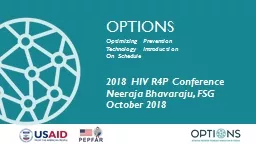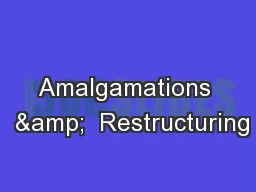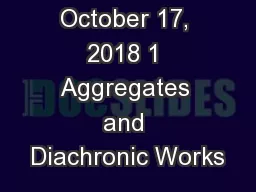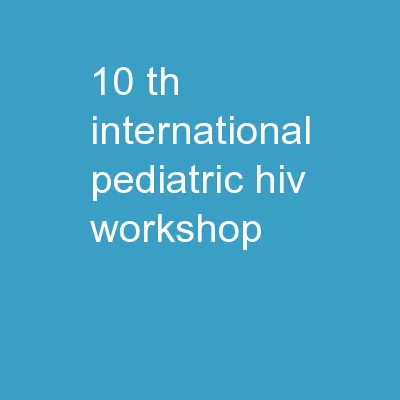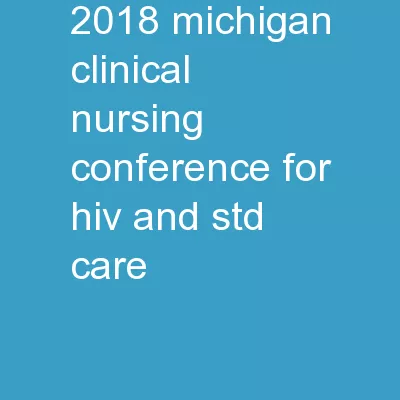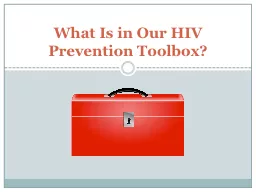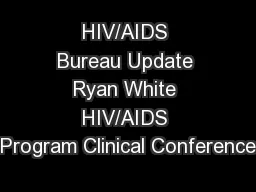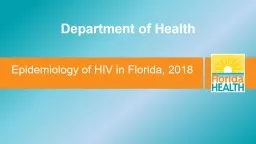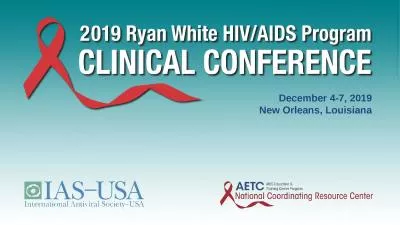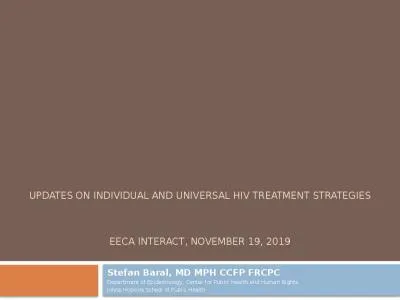PPT-OPTIONS 2018 HIV R4P Conference Neeraja Bhavaraju, FSG October 2018
Author : trish-goza | Published Date : 2019-10-31
OPTIONS 2018 HIV R4P Conference Neeraja Bhavaraju FSG October 2018 Optimizing Prevention Technology Introduction On Schedule What is OPTIONS The Optimizing Prevention
Presentation Embed Code
Download Presentation
Download Presentation The PPT/PDF document "OPTIONS 2018 HIV R4P Conference Neeraja ..." is the property of its rightful owner. Permission is granted to download and print the materials on this website for personal, non-commercial use only, and to display it on your personal computer provided you do not modify the materials and that you retain all copyright notices contained in the materials. By downloading content from our website, you accept the terms of this agreement.
OPTIONS 2018 HIV R4P Conference Neeraja Bhavaraju, FSG October 2018: Transcript
Download Rules Of Document
"OPTIONS 2018 HIV R4P Conference Neeraja Bhavaraju, FSG October 2018"The content belongs to its owner. You may download and print it for personal use, without modification, and keep all copyright notices. By downloading, you agree to these terms.
Related Documents

